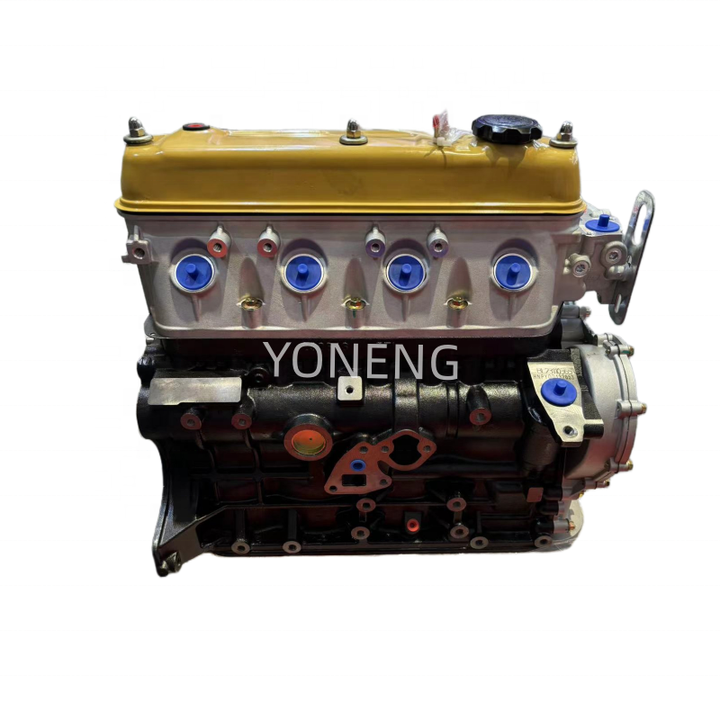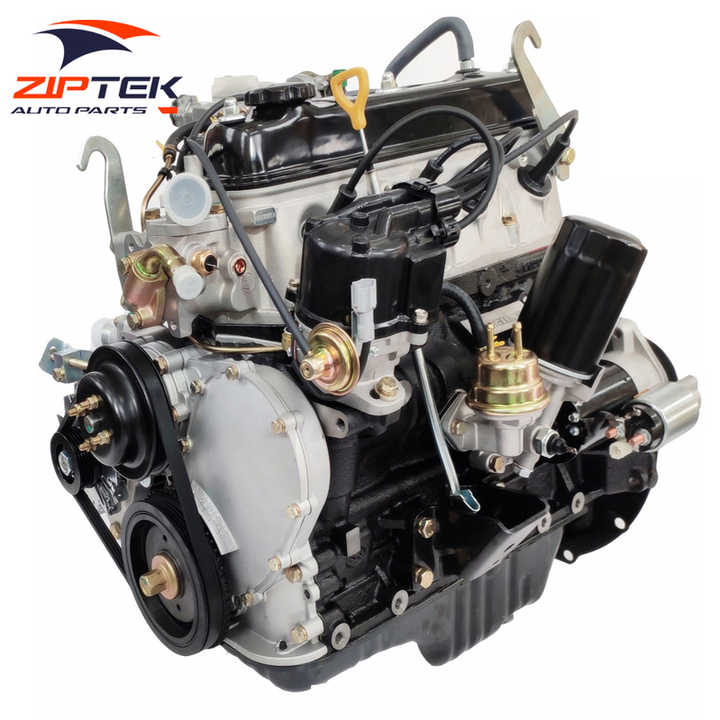The History and Evolution of the 4Y Engine in Automotive Engineering
The History and Evolution of the 4Y Engine in Automotive Engineering
Blog Article
The Ultimate Overview to the Engine: Trick Insights for every single Auto Fanatic
Recognizing the engine is fundamental for any kind of automotive fanatic, as it functions as the heart of the car and determines its performance. This guide gives a thorough exam of engine composition, kinds, and the auto mechanics behind their operation, consisting of the innovative modern technologies that are improving the auto landscape. It underscores the essential nature of maintenance techniques that can dramatically influence an engine's life expectancy. Nonetheless, the complexities of engine characteristics and the most recent innovations in technology present questions that merit additional expedition. What might these insights disclose regarding the future of vehicle design?
Anatomy of an Engine
Comprehending the makeup of an engine is critical for any type of cars and truck fanatic looking to dive much deeper right into vehicle technicians. An interior burning engine primarily includes a number of key elements that operate in unison to convert fuel right into mechanical energy.
At the heart of this system exists the cylinder block, which houses the cylinders where burning takes place. Piston activity within these cylinders is promoted by the crankshaft, which equates linear movement right into rotational energy. In addition, the camshaft plays a vital role in managing the opening and closing of the engine's valves, ensuring appropriate air-fuel mix consumption and exhaust gas expulsion.
Various other vital components consist of the fuel system, which provides the engine with the necessary fuel, and the ignition system, in charge of initiating burning - 4y engine. The cooling and lubrication systems are also integral, maintaining optimum operating temperature levels and lowering friction, respectively
Engine Types and Configurations
A varied series of engine kinds and arrangements exists, each offering distinct benefits and disadvantages customized to different driving needs and choices. One of the most usual engine types consist of inline, V, level, and rotary setups.
Inline engines, including cyndrical tubes prepared in a single line, are known for their simplicity and efficiency. They are usually located in compact vehicles, providing an equilibrium of power and economy. V engines, identified by their 2 banks of cylinders prepared in a V shape, offer greater performance and smoother procedure, making them popular in sporting activities and luxury automobiles.
Flat engines, or fighter engines, have flat opposed cylinders, which contribute to a lower center of mass, boosting automobile stability. These are generally seen in brand names like Subaru and Porsche.
Rotating engines, although much less common, use an unique design with a triangular rotor and deal high power-to-weight ratios. They master light-weight and small applications, mainly seen in Mazda automobiles.
Each engine kind offers certain efficiency attributes, weight distributions, and fuel effectiveness, making sure that auto fanatics can choose the best engine arrangement look at this site to match their driving style and lorry demands.

How Engines Work
Engines, despite their type or configuration, operate fundamental concepts that govern their efficiency and effectiveness. At their core, engines transform fuel right into power through a collection of regulated surges or compressions. This process usually includes 4 major strokes: intake, power, compression, and exhaust.
During the intake stroke, the engine attracts in a combination of air and gas. In the power stroke, a stimulate stirs up the pressed blend (in fuel engines) or the blend stirs up spontaneously (in diesel engines), resulting in a rapid development of gases that presses the piston down.
The performance of an engine is influenced by various factors, including the style of the combustion chamber, the kind of gas made use of, and the precision of the engine's components. Recognizing these basic principles is important for automobile enthusiasts who seek to value the elaborate mechanics behind their vehicles, as well as for those aiming to boost efficiency with modifications and adjusting.
Innovations in Engine Innovation
In recent years, advancements in engine technology have actually dramatically changed the automotive landscape, improving both performance and ecological sustainability. One of one of the most notable developments is the advancement of turbocharging and supercharging, which permits smaller sized engines to produce greater power outputs without compromising fuel performance. This has resulted in an increase in the appeal of scaled down engines, supplying producers with the capability to meet strict emissions laws while maintaining performance standards.
Additionally, crossbreed and electrical powertrains are reshaping the engine standard. Crossbreed systems combine inner burning engines with electric motors, optimizing fuel usage and decreasing discharges. Fully electrical cars (EVs) eliminate the combustion engine altogether, relying upon sophisticated battery innovation to supply instantaneous torque and outstanding acceleration.
Furthermore, the integration of artificial intelligence and artificial intelligence in engine management systems permits real-time optimization of efficiency my blog parameters, improving performance and responsiveness. Technologies such as variable shutoff timing and direct fuel injection even more refine burning processes, taking full advantage of power output while minimizing waste.
As the automobile industry proceeds to develop, discover this info here these innovations in engine technology will certainly play a crucial function in shaping the future of mobility, prioritizing both performance and sustainability.
Upkeep Tips for Enthusiasts
Preserving an engine is as important as the developments that enhance its efficiency. Regular maintenance not just prolongs the life of your engine but also guarantees optimum performance.
Replace and inspect air filters periodically to make certain proper air movement, which is vital for combustion efficiency. A clogged up air filter can cause reduced efficiency and increased fuel consumption. In a similar way, keep an eye on the coolant levels to stop getting too hot, and change coolant according to the solution schedule.

Verdict
In conclusion, a comprehensive understanding of engine anatomy, kinds, and mechanics is crucial for vehicle fanatics. Routine maintenance practices, including oil modifications and air filter checks, are important for ensuring optimal engine functionality and durability.

Engines, no matter of their kind or configuration, run on basic principles that control their efficiency and performance. In the power stroke, a stimulate fires up the pressed mixture (in gasoline engines) or the mix ignites spontaneously (in diesel engines), resulting in a quick expansion of gases that pushes the piston down.In recent years, developments in engine innovation have considerably changed the vehicle landscape, enhancing both efficiency and ecological sustainability.
Report this page